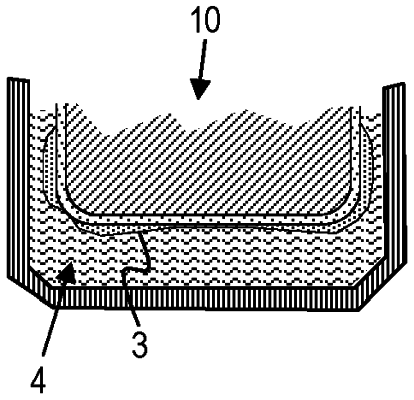| CPC C09K 13/06 (2013.01) [H01L 21/30604 (2013.01); H01L 21/32133 (2013.01)] | 15 Claims |

|
1. A method for operating a thin-film process facility, which is designed for layer removal from a workpiece, the facility having a process chamber, wherein the process chamber or an other component of the thin-film process facility comprises a protective layer, and wherein the method comprises:
providing the process chamber or the other component with a base body, with an intermediate layer, which at least partially covers the base body, and with the protective layer, which comprises an amorphous solid, and at least partially covers the intermediate layer, wherein the intermediate layer contains at least one element which is not contained in the protective layer;
repeatedly, simultaneously carrying out following two steps:
carrying out a removing process step using a process gas in the process chamber, wherein the protective layer comes into contact with the process gas; and
analyzing the process gas in the process chamber by an analysis method sensitive to the at least one element;
until the at least one element is detected in the process gas; and
replacing the protective layer on the process chamber or on the other component with a new protective layer by:
removing an old protective layer by:
bringing the protective layer into contact with an etching or a solvent medium; and
removing the protective layer under an action of the etching or solvent medium until the intermediate layer is exposed,
wherein the etching or the solvent medium causes a first etching or dissolving speed of the protective layer and a second etching or dissolving speed of the intermediate layer, and
wherein the first etching or dissolving speed is greater than the second etching or dissolving speed; and
applying the new protective layer.
|